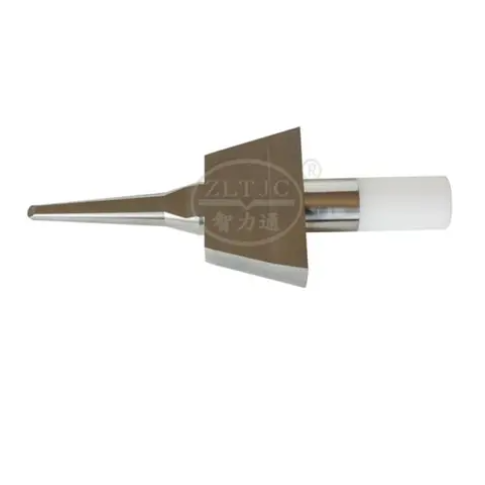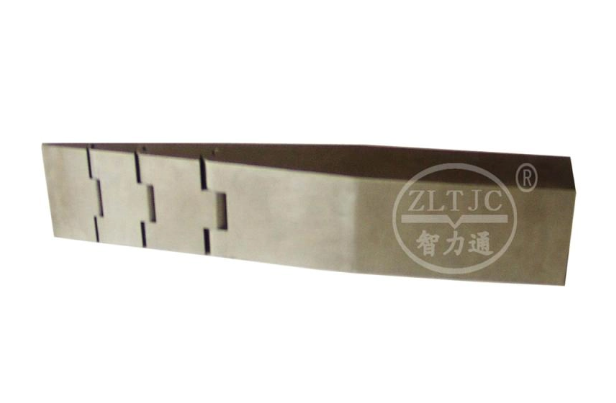In the world of electrical equipment testing, precision and safety are paramount. Whether for household appliances, industrial machinery, or consumer electronics, ensuring the accuracy of electrical measurements is critical to both the performance and longevity of the devices. One of the key tools used to achieve this is the IEC test probe, a device designed to measure electrical parameters such as voltage, current, and resistance in a safe and reliable manner.
IEC (International Electrotechnical Commission) test probes are essential for performing accurate and safe electrical testing in accordance with international standards. These probes help technicians and engineers verify that electrical equipment operates within safe limits, ensuring that the equipment performs optimally without posing safety risks.
The Role of IEC Test Probes in Electrical Equipment Testing
IEC test probes are integral to electrical testing, as they serve as the interface between the testing device and the electrical equipment being tested. The probes allow for the measurement of various electrical parameters, such as voltage, current, and resistance, which are crucial for evaluating the functionality, efficiency, and safety of electrical equipment.
By providing a direct connection between the test equipment and the electrical system, IEC test probes enable technicians to monitor real-time data and assess the performance of the device. Whether it is checking the current flowing through a circuit or measuring the voltage across components, accurate data from test probes is essential for detecting faults and ensuring the equipment operates within its design specifications.
Accurate electrical measurements can significantly affect the performance and safety of electrical devices. For example, measuring voltage helps ensure that the device is receiving the correct amount of power, while current measurement ensures that the device does not exceed its current rating, which could lead to overheating or failure. Additionally, by accurately assessing resistance and continuity, engineers can identify potential issues such as loose connections, damaged components, or faulty wiring.

How IEC Test Probes Work
IEC test probes are designed to be highly precise and reliable tools for measuring electrical parameters in testing scenarios. The working principle behind IEC test probes is simple: they act as conductive pathways for the electrical signals, allowing the measurement equipment to analyze the data.
1.Measuring Voltage and Current:
When testing electrical equipment, voltage and current are two of the most critical parameters to monitor. IEC test probes are connected to the electrical device to measure these values. The probes are designed to handle different voltage and current ranges, depending on the device under test (DUT).
Voltage Measurement: The probes are used to measure the potential difference (voltage) between two points in an electrical circuit. By connecting the test probe to these points, the technician can determine whether the device is operating within its specified voltage range. If the voltage is too high or too low, it could indicate a fault or an issue that needs to be addressed.
Current Measurement: Current is another key parameter that test probes help measure. Current measurement ensures that the device does not exceed its rated current, which could lead to overheating, component damage, or failure. IEC test probes are used to monitor the flow of current through the device, ensuring it remains within safe limits.
2.Interaction with Testing Instruments:
IEC test probes are typically used in conjunction with testing instruments such as digital multimeters, oscilloscopes, or specialized testing devices. The probes act as sensors that connect the DUT to the testing equipment. Once connected, the probes collect real-time data from the device, which is then analyzed by the testing equipment to produce accurate results.
The data collected by the probes is displayed on the testing instrument, where technicians can observe voltage, current, or resistance levels. This allows for quick detection of faults, abnormal behavior, or any deviations from the expected operating parameters.
3.High Precision and Consistency:
The importance of high precision and consistency in electrical measurements cannot be overstated. Inaccurate measurements can lead to faulty diagnoses, ineffective troubleshooting, and potentially unsafe equipment. IEC test probes are designed to meet strict standards of precision to ensure reliable results.
The consistency of measurements is equally important. For electrical equipment to function safely and reliably over time, the measurements obtained during testing must be repeatable and accurate. IEC test probes help achieve this by offering consistent results across multiple tests and over extended periods, which is crucial for determining the long-term viability of electrical devices.

IEC Standards for Test Probes and Measurement Accuracy
IEC standards provide the necessary guidelines and specifications for test probes to ensure they meet the highest safety and performance standards. These standards are designed to guarantee that the probes provide accurate, consistent, and reliable measurements while adhering to international safety requirements.
1.Ensuring Measurement Precision:
IEC standards specify the requirements for test probes, including their construction, materials, and electrical characteristics. By adhering to these standards, IEC test probes are able to deliver highly accurate measurements across a wide range of voltages, currents, and resistance levels. The standardization ensures that test probes used in different environments and applications will provide consistent and reliable results.
2.Reliability and Long-Term Performance:
The reliability of test probes is critical for maintaining the accuracy of electrical testing over time. IEC test probes are designed to withstand prolonged use, extreme environmental conditions, and high-stress testing situations. By ensuring that the probes remain durable and accurate throughout their lifespan, IEC standards help protect both the device under test and the technician performing the test.
3.Safety Considerations:
IEC standards also address safety concerns related to the use of test probes. These standards ensure that the probes are properly insulated to prevent electrical shock or short circuits during testing. They also specify the requirements for probe construction, such as the materials used, which must be resistant to wear and heat to prevent failure during high-stress testing.
Different Types of IEC Test Probes and Their Applications
IEC test probes come in various types, each designed for specific testing requirements. Understanding the different types of probes and their applications is essential for selecting the right probe for the job.
1.Standard Voltage Probes:
These probes are designed for measuring voltage in a wide range of devices, from household electronics to industrial equipment. They are typically used for low- to medium-voltage applications and are commonly found in multimeters or digital testers.
2.High-Voltage Probes:
For equipment operating under high-voltage conditions, such as industrial machinery or power transformers, high-voltage test probes are required. These probes are built to handle higher voltages and are equipped with enhanced insulation to ensure safe testing.
3.Current Probes:
Current probes are designed to measure the flow of electrical current through a conductor or circuit. These probes are typically used to monitor current levels and detect abnormal conditions, such as overcurrent or circuit faults.
4.Temperature-Proof Probes:
Some electrical devices, especially those used in extreme environments, require temperature-proof probes that can withstand high temperatures without compromising accuracy. These probes are used in applications where the temperature of the electrical components could significantly affect the measurement process.
5.Specialized Probes:
In addition to the standard probes, there are specialized probes designed for specific applications, such as testing components in automotive systems, medical devices, or telecommunications equipment.
How to Choose the Right IEC Test Probe for Your Device
Selecting the right IEC test probe is crucial to ensuring accurate and safe testing. The choice of probe depends on several factors:
Type of Equipment:
Consider the type of electrical equipment being tested. Different devices may require probes with different voltage and current ratings. Ensure that the probe you choose matches the specifications of the device under test.
Application Environment:
The environment in which the testing takes place will also influence probe selection. For example, outdoor testing environments or high-temperature applications may require probes with special insulation and temperature resistance.
Safety Standards:
Always choose probes that meet IEC safety standards. These standards ensure that the probes are properly insulated and safe to use in testing environments.
Conclusion
In conclusion, IEC test probes are essential tools for ensuring safe, accurate, and reliable electrical testing. They allow technicians to measure key parameters like voltage, current, and resistance with precision, which is crucial for assessing the performance and safety of electrical equipment. By adhering to IEC standards, these probes guarantee consistent results, long-term durability, and safety during testing.
For businesses looking to optimize their electrical testing processes, Guangzhou Zhilitong Electromechanical Co., Ltd. offers a wide range of high-quality IEC test probes that meet international standards. Their probes are designed to provide accurate measurements, ensure safety, and improve the overall efficiency of your testing procedures.
To learn more about how their IEC test probes can enhance your testing capabilities, visit www.electricaltest.cn or contact their team for expert advice and personalized solutions. Let Guangzhou Zhilitong Electromechanical Co., Ltd. help you elevate your electrical testing to the highest standards of accuracy and safety.















